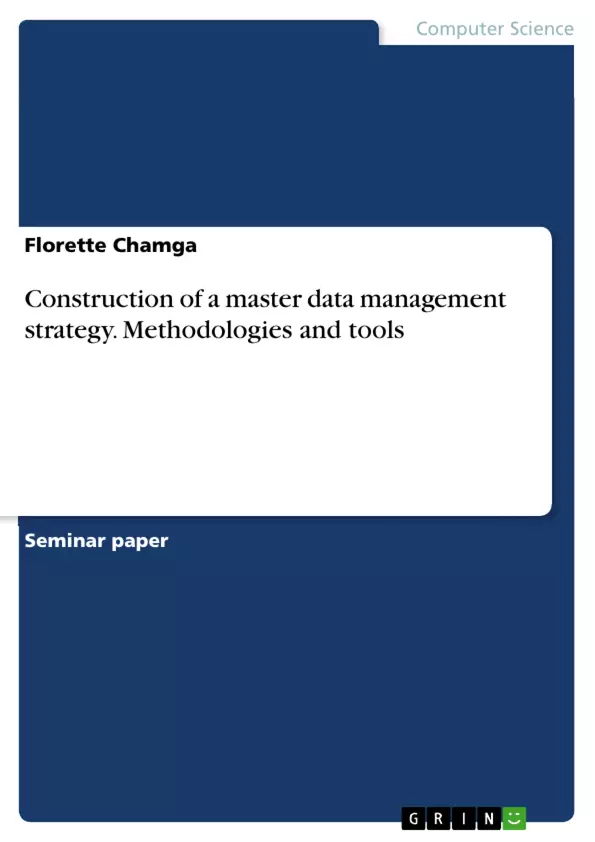In a world governed by mobile internet and characterized by an increasing number of active customers on the way, companies have to face the difficulty of implementing an adequate strategy for proper master data management. The drastic increase in active mobile connection of both companies and customers leads to rapid master data growth and therefore points out the necessity of implementing a management strategy. The construction of a master data management strategy implies the interaction of different tools and methodologies. Starting with an overview of existing literature and limiting itself within the given scope, the present review then handles the interaction proper. This constitutes the essential component of this work.
Inhaltsverzeichnis (Table of Contents)
- Introduction
- Problem statement
- Research question
- Objective
- Structure of the paper
- Fundamentals and Basic terms
- Master data
- Master data management
- Master data management strategy
- Methodology for the literature work
- Methodology
- Keywords ans search queries
- Search filter
- Literature sources
- Result of the Work
- Construction of master data management strategy: methodologies and tools
- Methodologies
- Evaluation of reasearch findings: methodologies
- Tools
- Ecaluation of research findings: tools
- Construction of master data management strategy: methodologies and tools
Zielsetzung und Themenschwerpunkte (Objectives and Key Themes)
This seminar thesis aims to explore the available methodologies and tools that facilitate the construction of a master data management strategy. It emphasizes the importance of master data management for companies in a rapidly evolving digital landscape, where information exchange is increasing exponentially. The work aims to provide insights into the strategic management of master data, ensuring consistent and accurate business data for all stakeholders.
- Master data management (MDM) strategies and their significance for businesses
- Methodologies for constructing a master data management strategy
- Tools available for master data management strategy implementation
- The role of master data in business operations and decision making
- The importance of data quality and its impact on business success
Zusammenfassung der Kapitel (Chapter Summaries)
The introduction establishes the problem statement, research question, and objective of the seminar thesis. It highlights the importance of master data management in a world of increasing digital interaction and data growth. The chapter then outlines the structure of the paper.
The chapter "Fundamentals and Basic terms" provides a comprehensive definition of key concepts including master data, master data management, and master data management strategy. It explores different perspectives on these terms, drawing on various academic and industry sources.
The chapter "Methodology for the literature work" details the methodology employed in the literature review. This includes the keywords used, search filters applied, and the sources consulted.
The chapter "Result of the Work" presents the findings of the literature review, focusing on the methodologies and tools available for constructing a master data management strategy. It evaluates these findings and provides insights into their practical applications.
Schlüsselwörter (Keywords)
The main keywords and focus topics of this seminar thesis include master data management (MDM), master data management strategy, master data management solution, data quality, data governance, data integration, and business intelligence. It explores various methodologies and tools for developing and implementing an effective MDM strategy, emphasizing the importance of consistent, accurate, and accessible data for organizations.
- Quote paper
- Florette Chamga (Author), 2016, Construction of a master data management strategy. Methodologies and tools, Munich, GRIN Verlag, https://www.grin.com/document/343195



